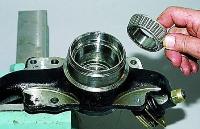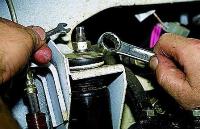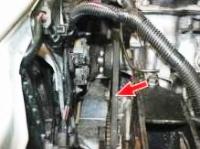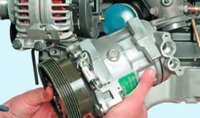Brake fluid needs to be changed after 90 thousand km, or six years of car operation
Of course, if the brake fluid has changed color and become dirty, then you need to change the brake fluid regardless of the period.
To replace and bleed the brakes, you will need an 11 wrench, brake fluid, a transparent or rubber hose, a transparent vessel, a syringe, a balloon wrench.
Brake fluid can be DOT-4.
The procedure for replacing and pumping fluid is as follows:
- - right back;
- - left front;
- - left back;
- - right front.
Put the car on a lift and remove the wheels.
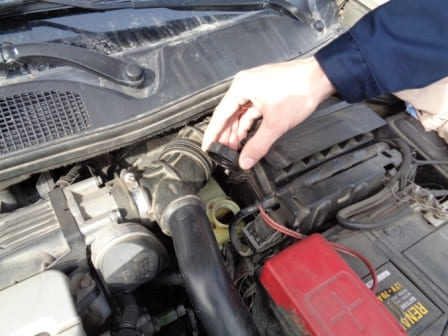
Remove the cap from the master brake cylinder reservoir
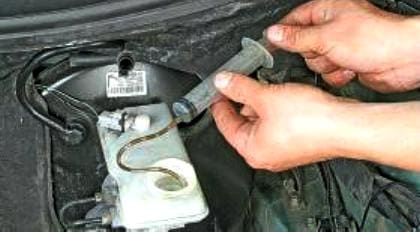
with a syringe or a pear we pump out the brake fluid from the reservoir of the main brake cylinder
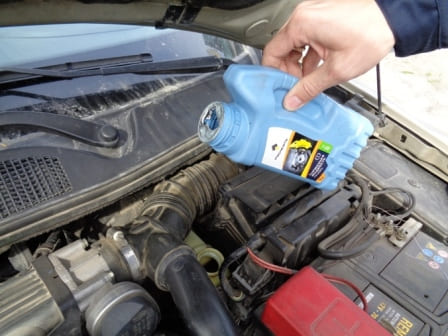
Pour clean brake fluid into the reservoir up to the lower edge of the filler neck

We clean the air release valves from dirt

Remove the protective caps of the valves of the working cylinders of the brake mechanisms of the front wheels
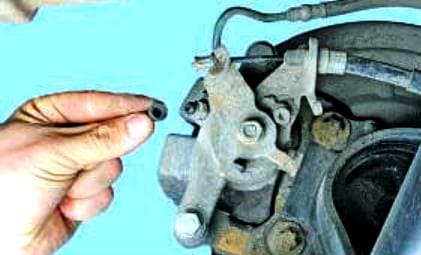
Remove the protective caps of the rear wheel brake valves
We put the hose on the air release valve of the brake mechanism of the right rear wheel and lower the end of the hose into a vessel filled with brake fluid (Fig. 7).
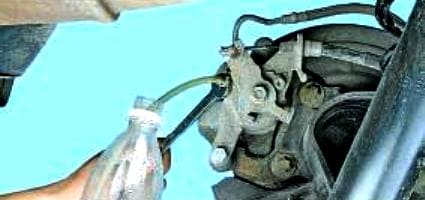
The assistant should sharply press the brake pedal 5-6 times, then keep the pedal depressed.
Turn off the air release valve a little.
Old brake fluid will begin to flow out of the hose.
The brake pedal at this time should smoothly reach the stop.
As soon as the liquid stops flowing out, close the air release valve.
We monitor the fluid level in the reservoir of the main brake cylinder and constantly add it.
Thus, the gradual displacement of the old liquid is ensured.
We carry out this operation in accordance with the replacement order (as mentioned above).
Bleeding the pressure control circuit
This operation is performed after removing or replacing one of the following items:
- - brake master cylinder;
- – hydroblock;
- - brake fluid;
- - hydraulic brake reservoir.
Put the car on a two-post lift.
Connect:
- - a device for removing air from the brake fluid reservoir of a car;
- – diagnostic tool.
Install containers to collect the brake fluid.
Remove the right rear wheel bleed screw.
Activate the right rear wheel brake pressure control solenoid valve (command AC156).
With the solenoid valve activated, slowly press the brake pedal all the way down and slowly release it.
Such an impact on the pedal allows you to create a pressure equal to or greater than 15 bar in the brake system.
Tighten the appropriate bleed screw.
Perform these operations with the following brake.
Strictly observe the following order:
- - left rear wheel (AC155 command);
- – left front wheel (AC153 command);
- – right front wheel (AC154 command).
Remove the bleeder.
Restore the brake fluid level in the reservoir.
Check the tightness of the bleeder fittings on the brakes and the presence of protective caps.
When performing a road test, operate the ABS to check for proper brake pedal travel.
If the pedal travel has increased, repeat bleeding the brake system, excluding the brake pressure control circuit, and bleeding the brake pressure control circuit until the brake pedal travel is correct.
You can use more brake fluid than the capacity of the brake system.






